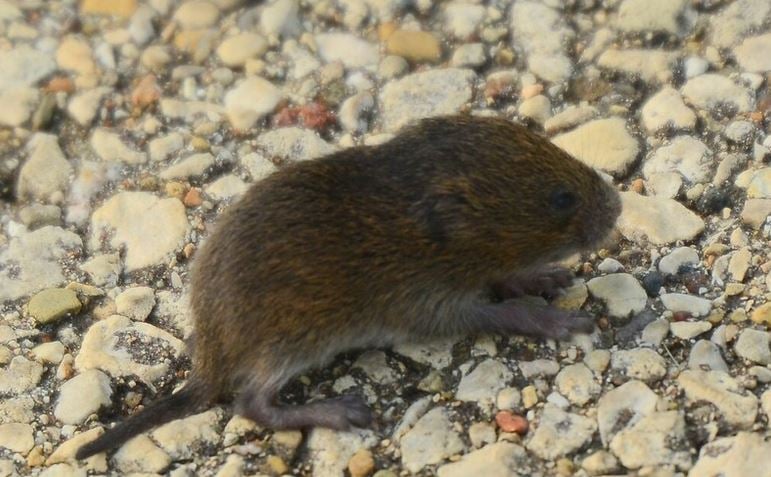Effective Vole Control Solutions: Taking Care Of Vole Pest Issues
Effective Vole Control Solutions: Taking Care Of Vole Pest Issues
Blog Article
Comprehensive Overview to Efficient Vole Bug Control: Invasion Identification and Treatment Approaches
In the world of effective insect control, vole invasions present an unique difficulty that demands a calculated strategy. These tiny rodents, often mistaken for mice, can damage yards, grass, and crops if left unchecked. Determining the indicators of vole existence and implementing targeted therapy methods are crucial elements of an effective insect monitoring strategy. By checking out the nuances of vole habits, understanding crucial indications of invasion, and reviewing a variety of control choices, one can develop a detailed strategy to fight these evasive pests.
Recognizing Vole Habits
Vole actions is defined by their burrowing practices and fast reproduction rates, making them a challenging pest to manage effectively. These small rats commonly develop complex passage systems underground, using them for shelter, food storage, and transport. Voles are herbivores, consuming a variety of plants, lawns, origins, and light bulbs, which can create significant damage to yards, orchards, and lawns. Their quick reproductive rate additional makes complex control efforts, with females efficient in producing multiple clutters in a solitary year, each having several spawn.
Understanding vole behavior is critical for effective insect control approaches. By determining their burrow areas, monitoring feeding areas, and carrying out targeted control approaches, such as trapping or habitat adjustment, vole problems can be taken care of efficiently.
Indications of Vole Problem

Avoidance Techniques
Applying effective prevention methods is essential in decreasing vole invasions and guarding greenery from their harmful feeding routines (vole pest control). To avoid vole problems, it is vital to start by getting rid of prospective food resources and sanctuary. Keep lawn and plant life cut short, remove weeds and debris, and preserve a clean garden or grass to make the area less appealing to voles. Installing barriers such as equipment fabric or below ground fence can likewise help prevent voles from getting in particular areas. Additionally, lowering excess wetness by taking care of leaky pipelines and ensuring correct water drainage can make the environment less congenial for voles.
Consistently inspecting the property for indications of vole activity, such as runways and burrow openings, is crucial for very early detection and punctual activity. Think about making use of traps or repellents purposefully put near their pathways if vole task is believed. Using natural killers like owls or serpents can additionally assist maintain vole populations in check. By implementing a mix of these prevention strategies, garden enthusiasts and house owners can efficiently shield their vegetation from vole damage.
Non-Lethal Control Methods
To efficiently take care of vole populations while prioritizing gentle approaches, non-lethal control strategies use practical services for lowering vole damage in landscapes and yards. One efficient method is making use of physical barriers such as equipment towel or cable mesh to safeguard susceptible plants. These obstacles can be buried at the very least 12 inches deep and curved at a 90-degree angle to stop voles from burrowing underneath. In addition, environment alteration can hinder voles by lowering their preferred food resources and concealing places. Preserving a well-mowed yard, removing debris, and maintaining plant life cut can make the atmosphere less appealing to voles.

Lethal Control Options
One effective technique for attending to vole invasions in gardens and landscapes includes the calculated use of dangerous control alternatives. When faced with a severe vole problem that non-lethal techniques have fallen short to consist of, executing lethal control actions ends up being vital. Generally, when utilizing lethal control alternatives, it is crucial to do so sensibly and in accordance with regional policies to successfully take care of vole problems.
Final Thought
In final thought, effective vole parasite control calls for a thorough understanding of vole habits, identification of indicators of invasion, application of prevention techniques, and utilization of both non-lethal and deadly control techniques. By integrating these methods, individuals can efficiently manage vole populations and secure their residential property from damages. It is vital vole pest control to deal with vole problems promptly to stop additional concerns and minimize the influence on the surrounding environment.
Provided the detailed tunnel systems and fast recreation rates particular of voles, acknowledging the indicators of vole invasion becomes essential in efficient bug control. One of the key indicators of vole existence is the visibility of surface paths or tracks in yard or snow, usually about 1-2 inches broad, developed as voles take a trip in between their burrows and food sources.To successfully handle vole populaces while prioritizing gentle approaches, non-lethal control strategies provide useful options for lowering vole damages in landscapes and yards.One reliable approach for addressing vole infestations in landscapes and yards entails the critical usage of dangerous control alternatives. vole control utah.In verdict, reliable vole bug control calls for an extensive understanding of vole actions, recognition of indications of invasion, implementation of prevention approaches, and application of both deadly and non-lethal control techniques
Report this page